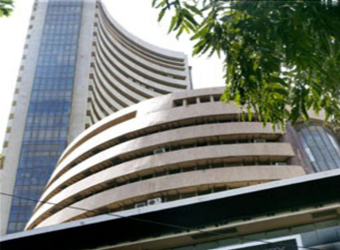The Indian government listed Friday its first ever bond index on the London Stock Exchange, opening the country’s debt markets to the rest of the world.
Launched in collaboration with global index and data provider FTSE Russell, the index will consist of Indian rupee-denominated government bonds – a first of its kind for India. The seeds of this were sown back in November 2015 when the two countries signed a collaboration during the visit of Indian Prime Minister Narendra Modi to the United Kingdom.
“It will turn out to be quite significant. If you look at the Indian market, it is around $1.7 trillion, of which $770 million is government issuances,” Arundhati Bhattacharya, chairwoman of the State Bank of India (SBI), told CNBC Friday.
She explained that until now international investors had no transparent benchmark or index on which to base their decisions regarding investment in these papers, and therefore the expectation is that this index will give them that ability to take those decisions.
“We are also hoping to get a few products like ETFs (exchange-traded funds) based on these indices to enable a larger population of investors to come to India.”
The Indian bond market is still in its nascent stages of development as compared to the rest of the world but Bhattacharya is confident that there is a lot of potential for development.
“India has a significant domestic bond market that continues to see strong demand from foreign investors,” Waqas Samad, chief executive officer of fixed income and multi asset at FTSE Russell, said in a press statement. He added that the listing would enable developing index products that can create “greater awareness and foster liquidity across the Indian domestic fixed income spectrum.”
Is the economy moving forward?
The Indian economy has been in a state of transition ever since Modi came to power in May 2014. A few months before that, in September 2013, Raghuram Rajan took charge of the Reserve Bank of India, the country’s central bank. Investors immediately fell in love with the Modi-Rajan duo that promised business-friendly reforms and slowly incentivized growth in India.
The Indian economy started seeing more and more foreign investors pump their money into various areas of the economy.
However, investors suffered a small blow when Rajan’s term came to an end in September 2016 after speculation of a rift between the ideologies of the current government and Rajan. His successor Urjit Patel almost immediately took over the role of a market-friendly central bank governor, a move that reassured investors across the globe.
Following on from that, the government’s efforts to launch the demonetization drive in order to get rid of the so-called “black money” – billions of dollars’ worth of cash in unaccounted wealth and fake currency notes – has been applauded by foreign investors.
India’s bad loans
The country’s bad loan problem has been estimated to be much bigger than even New Zealand’s $170 billion economy. Earlier this week an analyst from India Ratings and Research, a credit ratings agency and a unit of Fitch Ratings, told Reuters that about $195 billion of bad loans were already stressed.
In 2016, ICICI Bank and Axis Bank revealed the depth of the problem. According to Axis Bank, 225 billion rupees of its loans are on a “watch list.” The bank said it expects 60 percent of those to default in two years. ICICI Bank, one of India’s top private lenders, said about 525 billion rupees of its loans have been put on watch. These loans were made to sectors such as steel and power.
The true extent of these bad loans was laid to rest after data from Axis Bank and ICICI hit the wires but the long-term impact of this continues to baffle both investors and analysts who compare the mounting loan problem to that of the U.S. subprime crisis.
“While the Indian government doesn’t want to underwrite all of this, they have come up with legal structures to help resolve this issue. As you know most of these currently are in the bankruptcy courts. Bankruptcy courts have started operating in India and it is to the credit of this government that as complicated a law as this was brought within one-and-a-half years of the government coming in place and the courts have actually started operating in super quick time,” Bhattacharya told CNBC.
India took the crucial step to speed up its insolvency regime by passing the country’s first bankruptcy law last year. The breakthrough is expected to help the country tackle its mounting debt problem.
“We are hopeful that as this process goes through the bankruptcy courts, we will see resolutions that are acceptable and those that are not suspect of moral hazard which obviously is a major downside for the resolution of any of these things.”
Bhattacharya noted that apart from this one overhang for the banking sector, all the other macroeconomic parameters in India are working well.
Source: CNBC



